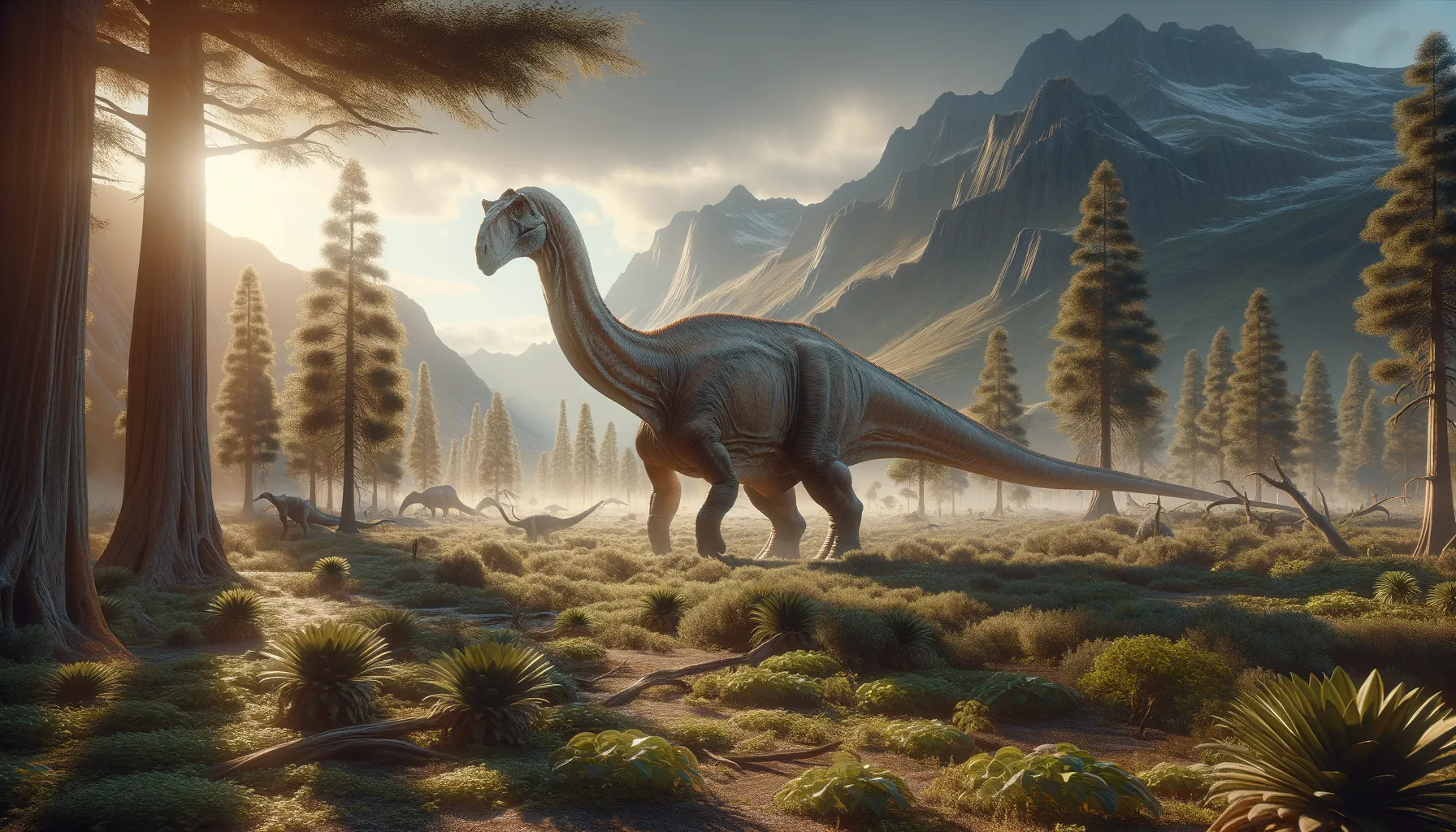
Cedarosaurus
Giant of the Cretaceous lands
Period
Cretaceous
Length
Estimated length of around 20 meters.
Height
About 6 meters tall at the shoulders.
Weight
Approximately 30 to 40 tons.
Cedarosaurus was a massive sauropod dinosaur that roamed the Earth during the Early Cretaceous period. Known for its long neck and tail, it was a herbivorous giant that spent its days foraging for plants and leaves. This dinosaur's remains were first discovered in what is now Utah, contributing significant insights into the sauropod diversity in North America during the Cretaceous.
Diet
Cedarosaurus was a herbivore, primarily consuming a variety of plant material. Its long neck allowed it to reach high vegetation that other herbivores could not access.
Hunting
As a herbivore, Cedarosaurus did not hunt but was instead adapted to foraging for plant material. Its massive build protected it from many predators, allowing it to feed in peace.
Environmental challenges
Cedarosaurus faced various environmental challenges, such as fluctuating climate conditions and competition for food sources with other herbivorous dinosaurs. Its large size meant a high demand for food, implying that changes in vegetation could impact its survival. Navigating terrain and finding adequate water supplies during dry periods were also challenges it contended with.
Speed
Relatively slow-moving, likely due to its large size.
Lifespan
Estimated to be around 70 to 80 years.
First discovery
Discovered in the Cedar Mountain Formation, Utah, in 1996.
Fun Facts
- Cedarosaurus was a long-necked dinosaur that lived during the Early Cretaceous period, around 110 million years ago.
- This dinosaur was discovered in the Cedar Mountain Formation in Utah, which is how it got its name.
- Cedarosaurus is known for its impressive length, estimated to be about 20 meters (65 feet) long.
- It belonged to a group of dinosaurs called sauropods, which were known for their large size and long necks.
- Cedarosaurus likely ate plants, using its long neck to reach leaves high up in trees.
- The dinosaur's bones were not as solid as they appeared; many had air spaces to reduce weight, similar to modern bird bones.
- Cedarosaurus is an important find for scientists because it helps us understand more about the diversity of sauropods in North America.
Growth and Development
Cedarosaurus hatched from eggs and relied on rapid growth to reach a size where it could defend itself from predators. Juveniles likely grew at a fast pace, requiring ample nutrition to sustain their development. It experienced different growth stages, with early years focused heavily on increasing size and strength.
Habitat
They inhabited what is now North America, thriving in lush, verdant areas with abundant plant life. Swampy regions and areas with plentiful water sources would have been ideal for their survival needs.
Interaction with other species
Cedarosaurus likely coexisted with other dinosaur species, each occupying different ecological niches. They would have shared their habitat with smaller herbivores and large carnivorous dinosaurs, necessitating a mutual avoidance or defense strategy.
Natural lifespan
If not predated upon or impacted by disease, Cedarosaurus could live up to 80 years.
Reproduction
Cedarosaurus reproduced by laying eggs in nests built on the ground. The eggs were incubated through environmental heat rather than parental care, which was typical for sauropods.
Social behaviour
They may have lived in herds for social reasons and protection, traveling together to find food and water. Such social structures would provide safety in numbers, especially for the young and vulnerable individuals.
Fossil locations
Fossils of Cedarosaurus have primarily been found in Utah, providing valuable insights into the distribution of sauropods in North America. These discoveries have enriched understanding regarding the paleogeography of the Early Cretaceous.
